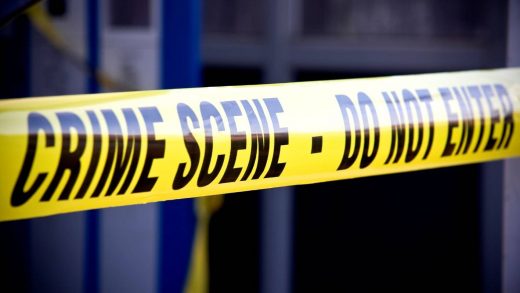
VANESSA LAURIE/Stuff
Adrian Humphreys’ camper as it was set up in Tangarakau where he was killed in May, 2022.
Images of blood-soaked camping equipment and bedding have been shown to a jury deciding the fate of a teenager accused of murdering former Royal Air Force serviceman Adrian Humphreys at a remote Taranaki campground.
The photographs formed part of the evidence given by Detective Glenn Olliver in the High Court at New Plymouth on Friday in the trial of teenager Justice Williamson-Atkinson.
The 17-year-old has denied a charge of murder after Humphreys was found dead at the remote Bushlands Campground at Tāngarākau, off State Highway 43 in eastern Taranaki in May last year.
The Crown alleges Williamson-Atkinson murdered the unsuspecting camper with a knife from the campground’s kitchen, motivated by a desire to steal Humphreys’ car and escape from a programme run by START Taranaki for troubled youth.
Williamson-Atkinson’s defence team say Humphreys was not killed by their client, rather another youth on the programme.
Olliver, who was the officer in charge of the scene, said Humphreys had been found face down outside his camper dressed in just his boxer shorts and a tee-shirt.
Images of the inside of Humphreys’ camper were shown to the jury at the trial of the teenager accused of murdering him.
Outside the camper, police found “fluff” from the inside of a cushion, which was also found down the driveway of the campground and further down the road.
The Crown have said Williamson-Atkinson’s DNA was found in testing done on the “fluff” and matching fibres were found in trousers he had worn.
Olliver told the court Humphreys’ keys were not found in the first search of the camper but were later discovered by police as they were hidden between equipment away from where he slept.
Luminol testing in the days after Humphreys was found showed a blood trail from his bed to where he was found.
Inside the camper, police found Humphreys’ blood-soaked pillow and mattress, and insulation feathers from his sleeping bag which, when unfurled, showed several cut marks.
There were no signs of a disturbance, with Olliver saying all the items inside the camper were where they would expect to find them.
Under cross-examination by defence counsel Matt Phelps, Olliver said there was no indication that any attempt had been made to gain access to Humphreys’ car, which was still locked.
VANESSA LAURIE/Stuff
The road leading to the Bushlands Campground where a piece of “fluff” was found following Humphreys’ death.
A team leader at START Taranaki, Paul Haenga, said he had rejoined the group several days after the alleged murder and jokingly asked Williamson-Atkinson, and another youth, who can not be named, who had done it?
They both said “nah, nah, no idea”, but Williamson-Atkinson told him he had heard Humphreys arguing with someone outside after he had got back from a dinner party he had attended.
The accused said he heard this while he was in his tent.
Another START Taranaki mentor, Robert Kauika, who had been with the group at Bushlands, said he was shocked to discover Humphreys’ body early in the morning.
He said the three youths also “looked shocked” when they were told that a body had been found.
The trial, which is expected to take up to four weeks, will continue on Monday when the jury will be shown the inside of Humphreys’ camper which has been set up at a police property in New Plymouth.


